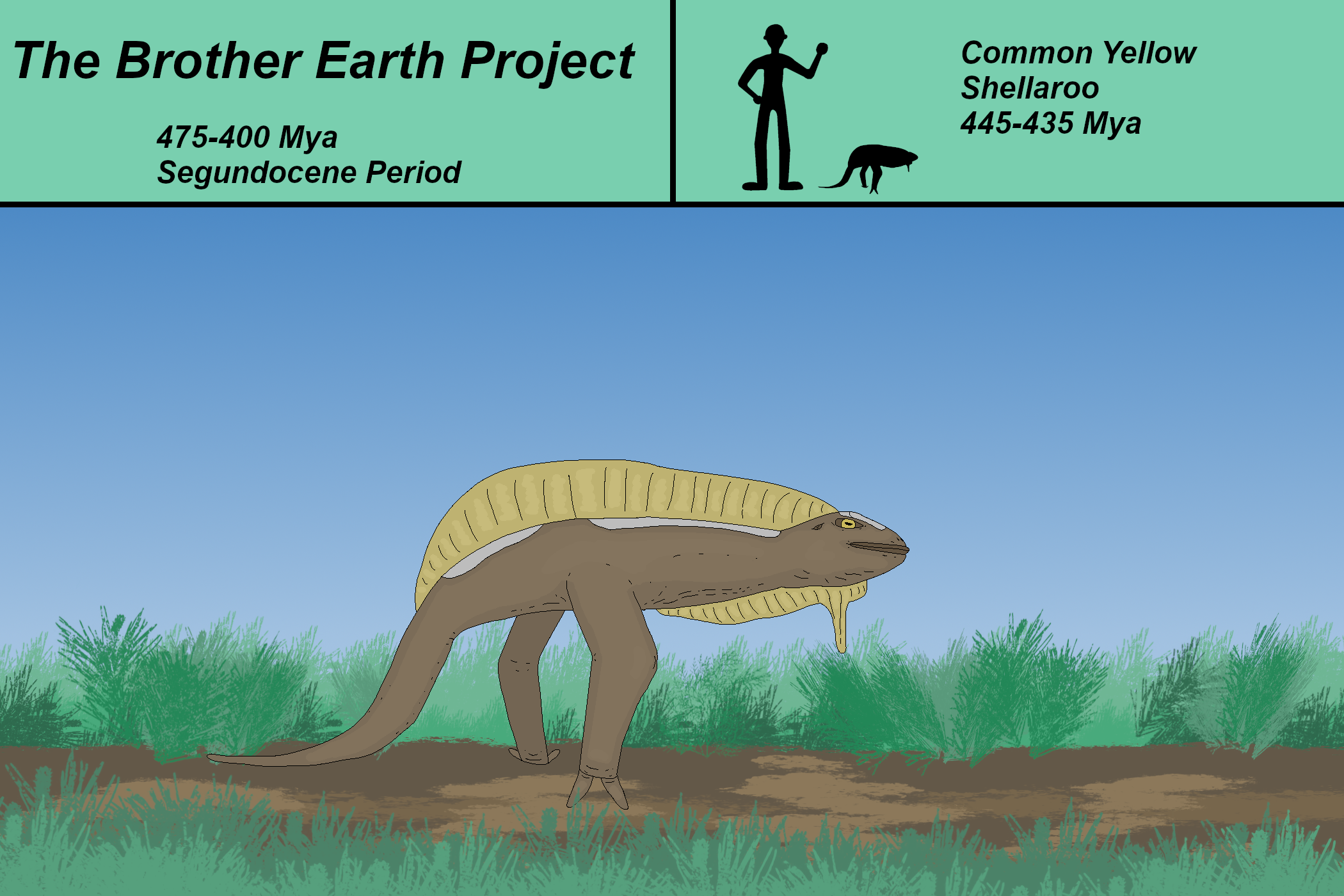HOME | DD
 ZTC3 — Common Yellow Shellaroo
ZTC3 — Common Yellow Shellaroo

#alienspecies #speculativeevolution #speculativebiology #speculativezoology #speculativexenobiology
Published: 2022-06-10 16:42:52 +0000 UTC; Views: 1845; Favourites: 6; Downloads: 0
Redirect to original
Description
Yet another art style change, this time with a simple size chart, name and time period. This template will be worked into future entries.The mid-Segundocene on planet Brough was the time to be an amphibious creature, and many lineages were on the cusp of becoming fully terrestrial. The Shellaroos were the first to make it onto land, strangely enough. These bipedal, toad-like organisms made a dramatic leap before all the other lineages due to sheer luck. They were pre-adapted with a repurposed swim bladder and the ability to launch itself with robust hindlimbs. The sails are actually dual fins, fully muscled and capable of movement, giving it great swimming capabilities. An extremely lengthened tail allows it to somewhat balance itself, much like a kangaroo at rest. However, this limb has too few bones in it to function as a proper third limb as its ancestors' body basically ended at the legs. The protective osteoderms on the back and head allow it to keep in moisture. Due to this peculiar biology, they are only outclassed in speed by the Multipods; Brough's version of bugs.
The Common Yellow Shellaroo was one of the most widespread species and lived across much of Southaustra and most of Proto-Yland. They lived by hopping from flooded island to island in deltas and marshes and lived high and dry whenever possible. Increased oxygen levels gave land Multipods an edge over the Shellaroos, and frequently preyed on them. Aquatic predators like Astrogills and Flumpuses, despite neither having the ability to breathe air, jump out the water to catch some drinking from time to time. The ancestors of the Shellaroos, the Ripplemakers, also will prey on them. Good thing these guys are fast, being able to sprint up to 15 mph.
Their breeding behavior is quite simple, dig a puddle and make a nest out of it. Shellaroo eggs are still rather permeable, and are transitioning into tougher forms, so must be kept wet, yet have to have air also. Spawning occurs in this tiny puddle, increasing the chance of fertilization. Internal fertilization behavior has yet to evolve.
The Common Yellow Shellaroo died out as the first Unitentae evolved and were outcompeted and squeezed out of every niche by other clades such as air breathing Flumpuses and the first Batras which took their place.
Entry to World Anvil page coming soon. (Ads are still there sorry)
Related content
Comments: 2

👍: 0 ⏩: 1

👍: 1 ⏩: 0






















